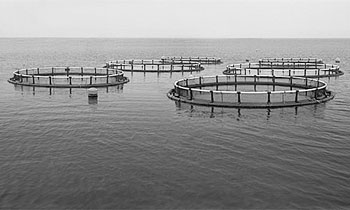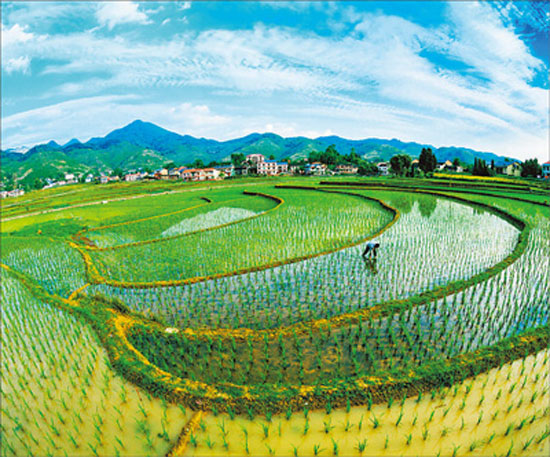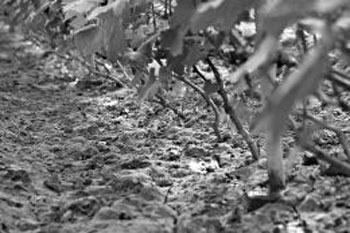Fishery Internet of Things Bottleneck, Industry-University-Research Isolation
Original title: when the fishing industry meets the Internet of things

The Internet of things helps aquaculture to carry out intelligent management. Photo Source: Baidu Pictures
Fishery as a traditional industry, its development is inseparable from the "armed" of modern technology.
A few days ago, China Agricultural University, the National Aquatic Technology extension Station, Ruantong Power Information Technology Co., Ltd. and other units jointly established the China Fisheries Internet of things and big data Industrial Technology Innovation Strategic Alliance (hereinafter referred to as the Alliance). The aim is to promote the transformation and upgrading of China's fishery through the modern fishery Internet of things.
The overall output value of fishery in China is relatively large, but due to various reasons, problems such as high risk of aquaculture and frequent occurrence of aquatic diseases are prominent. The use of the Internet of things and big data technology can realize the digitization of the aquaculture process and improve the level of information and scientific management of aquaculture production. " Li Daoliang, vice chairman of the alliance, director of the Beijing Agricultural Internet of things Engineering and Technology Research Center and professor of China Agricultural University, told China Science Daily.
There is huge space for fishery development.
As the saying goes, "No fish, no table." It is understood that in China, aquatic products provide consumers with 27.3% of the total animal protein intake.
Zhao Xingwu, director of the Fisheries and Fisheries Administration of the Ministry of Agriculture, said at a news conference on May 5 that China's aquatic products took the lead in realizing market-oriented reform. Over the past 30 years, the fishing industry has maintained rapid development, and the problem of eating fish has long been solved.
According to statistics from the Ministry of Agriculture, the total amount of aquatic products in China reached 66.9 million tons in 2015, with a per capita share of 48.65kg, providing urban and rural residents with high-quality protein.
At the same time, the fishing industry has played an important role in improving people's livelihood and increasing farmers' income. Data show that the national fishery output value reached 1.09 trillion yuan in 2015, and the per capita net income of fishermen reached 15600 yuan. The export surplus of aquatic products exceeded 10 billion yuan, and the export volume ranked first in domestic staple agricultural products.
However, in the past three decades, aquaculture in China has pursued the increase of total production unilaterally through scale expansion and resource consumption, and the increase in growth rate is at the cost of consumption and possession of a large amount of resources. A reporter from China Science Daily learned in an interview that this model has led to increasingly prominent problems of ecological imbalance and environmental degradation.
Zhao Xingwu said: "at present, there is an adequate supply of aquatic products in the market, and there is an oversupply of traditional aquatic products such as the four major fish, and some of them even press the ponds seriously. The fishery industry has entered a new normal in which it is difficult to sell fish, and it is facing new problems of optimizing product structure and upgrading consumption level."
Li Daoliang believes that due to the one-sided pursuit of output and insufficient attention to resources and environment, food safety, and the sustainable development of the environment, it is difficult to effectively guarantee the great waste of resources, low labor productivity, and high risks in aquaculture, which has seriously restricted the development of fishery production in China.
"the Internet of things and big data technology can fully perceive the fishery production site, reliable and safe transmission of fishery information, and intelligent processing of fishery information." Li Daoliang told reporters.
According to public data, 70% of the earth's waters currently provide only 10% of all human food, "which means there is a lot of room for the development of modern fisheries." China accounts for 73% of the world's aquaculture production, said Li Jiale, a professor at Ocean University of China.
The Internet of things is taking advantage of the situation
In Li Daoliang's view, modern fishery must be a high degree of integration of aquaculture technology, equipment technology, and information technology, all of which require the deep integration of modern fishery and the Internet of things, and make scientific decisions on the basis of big data's analysis. to achieve precision, automation and intelligence.
Luo Xiwen, academician of the Chinese Academy of Engineering and professor of South China Agricultural University, pointed out that speeding up the development of aquaculture at the present stage is an important part of promoting the coordinated development of aquaculture and planting, while large-scale and standardized aquaculture is the key to speeding up aquaculture.
"improving the level of informatization and developing the 'Internet of things +' aquaculture is the inevitable way to realize the large-scale standardization of aquatic products." Luo Xiwen said.
The 2015 guidance of the State Council on actively promoting the Internet + Initiative points out that we should promote a mature and replicable application model of the Internet of things in agriculture, and popularize networked agricultural environmental monitoring systems based on environmental awareness, real-time monitoring and automatic control in areas and regions with a good foundation, and build demonstration bases for healthy aquaculture.
"the application of the Internet of things technology to the field of aquaculture can achieve 'intelligent perception and intelligent management' in the field of aquaculture supervision, and effectively improve the level of safety supervision." Li Daoliang said.
It is understood that the Internet of things in fisheries and big data integrate sensing technology, wireless communication technology, intelligent information processing and decision-making technology into every link of aquaculture to realize intelligent monitoring of aquaculture environment and facilities, automatic control of aquaculture process and intelligent decision-making of aquaculture production.
For example, the Internet of things is used to monitor water quality in real time and improve water quality according to the results of water quality monitoring to reduce the risk of aquaculture. At the same time, the application of big data's intelligent technology realizes fine feeding and scientific drug use, so as to reduce the pollution of aquaculture water and change fishery production from experience-dependent to scientific decision-making.
In Li Daoliang's view, the real informatization should be "nourishing all things in silence." there is no need for lengthy tutorials and difficult training. It will be effective at a glance, and will naturally be sought after by farmers and win the market. This should be the best scenario for the integration of mobile Internet into the aquatic industry.
"therefore, the development of aquatic products mobile Internet should not focus on educating front-line farmers, but should proceed from the reality and thinking of front-line farmers and make adaptive changes according to the situation and imperceptibly." Li Daoliang told reporters.
The core technology needs to be broken through.
Li Jiale said that at present, the most urgent bottleneck for "Internet of things + fishing" is that people who understand aquaculture do not understand the Internet of things, and people who understand the Internet of things do not understand aquaculture. This is an important reason why the alliance integrates various organizations in the field of aquaculture and the Internet of things on one platform.
It is understood that the alliance gives full play to their respective advantages by integrating industry politics, industry, learning, research, and using resources of all parties, and realizing the effective combination of scientific research institutions, enterprises, and promotion institutions at the strategic level.
The most important thing is that the deep integration of industry, university and research can deeply study the technical application characteristics and improvement rules of sensors, collectors, controllers and fishery big data platform, and explore the technology integration and assembly of different culture modes. explore the construction of the national fishing Internet of things standard framework and big data public service platform.
In 2013, the "guidance of the State Council on promoting the orderly and healthy Development of the Internet of things" pointed out that we should realize the extensive application of the Internet of things in all economic and social fields, master the core technology of the Internet of things, and basically form a safe, controllable and internationally competitive industrial system of the Internet of things.
Core technology is what Li Daoliang is most worried about. "China's fishery Internet of things and big data's technological research is relatively backward, especially in the development and manufacture of sensing devices such as fishery smart sensors, many application projects mainly rely on imported sensing devices."
According to reports, most of the fishery special sensing equipment studied by domestic universities and scientific research institutes are still in the laboratory stage, and there are still many gaps between the products and foreign products in terms of stability, reliability, low power consumption and other performance parameters.
- Prev

In the early summer, Tanaka reflected the mountain city and the rice turned green.
In the early summer, Tanaka reflected the mountain city and the rice turned green.
- Next

The "few days ago" grapes mainly focus on "fresh" picking and will be paid for as long as they are extended.
The "few days ago" grapes mainly focus on "fresh" picking and will be paid for as long as they are extended.
Related
- A course of planting techniques and methods on how to grow carrots
- How to plant the latest tulips?
- Is it better to pick tea in the morning or in the afternoon? When is the best time for tea to be picked? what is the third or fifth tea?
- Launch Yuanxiao Happy combination Haocha + Tea Yuan healthy Taste
- Penghu Tourism "Fireworks 20 Parade with You"
- 2022 West Lake Happiness holds "Digital Revitalization Voucher" and draws iphone13 and laptop.
- Banqiao Fuzhou social houses are designed to change start-up combined with police elimination to create a safe and livable environment
- The convenient measure of "mechanical weeding" in Xinbei has been abused and the Agriculture Bureau has imposed heavy penalties on the illegal land consolidation.
- Changgeng University Joins Hands with Four Memory Factories to Rescue Memory Talent Shortage
- The list of Taiwan's top 100 MVP managers is listed by the Director-General of the Farmers' Association of Sanxia District.

